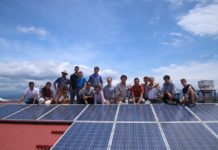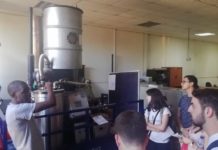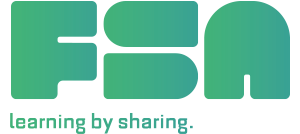By Tommaso Andreani, Marco Carlucci e Marzio Gioia
Nyumanzi is the largest refugee settlement in Adjumani District, located in the West Nile Region in Uganda. The District hosts 168,917 nationals and 239,335 refugees from South Sudan. According to UNHCR, Nyumanzi inhabitants account for 11% of the district population which is composed by 43,508 registered refugees with 2,104 pending registration:

On May 2019, The Field Study Abroad XIV was the first group approaching to an emergency situation through a meeting with Mr. Pascal, the Prime Minister Officer of the Area explaining us the dynamics and issues of the camps. It turns out that a particular attention is given to avoid friction between locals and refugees whose high density could bring to modify geography and biodiversity of the area. It is because of this that the resource distribution is divided across locals and refugees with except for food which is distributed only to refugees. Following a site visit in Nyumanzi camp was made, in particular to a self-sufficient school founded by the St. Egidio Community in cooperation with AICS – Italian Agency for Cooperation and Development, Francesca Pecorari ONLUS, Caritas of Lichtenstein and Rottenburg Stuttgart diocese.
To prevent further controversy and for immigration flux management the refugee distribution was based in 19 camps according to different tribe provenances as shown in Fig. 2.
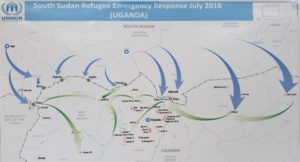
Figure 2 – Immigration Fluxes Management in 2016
Nyumanzi camp is in a situation of “Early Development” in which each family has its own land that contains a house in mud and sheet metal and a private vegetable garden.
All around the main street of the Camp is present a functional market that serves the settlement which is managed both by locals and refugees which are therefore starting economic activities. It is important to underline the presence of important facilities like schools, skill training centre, community centre and solar pumping plants which have a fundamental role for water collection purposes in the community.
Gaps and Challenges
The main gaps and challenges detected by UNHCR for Nyumanzi Refugee Camp are:
- Frequent delays in food ration distribution;
- Semi-permanent shelters have become dilapidated due to a lack of materials;
- Access to education, especially for secondary school-aged refugees, is limited;
- The only Health Centre serving the settlement cannot adequately meet resident’s needs;
- The basic non-food items (NFIs) are limited and distributed on a case by case basis;
Thanks to the visit of the Field Study Abroad and trough several interviews with inhabitants other problematics were detected expanding in such a way the findings with other fundamental aspects, in particular:
- Water shortage and supply difficulties;
- Desertification;
These criticalities which are strictly linked to climate changes are also related to a continuous deforestation of the area due to rain scarcity and firewood collection for cooking and charcoal production.
The Projects
Keeping in mind the fundamental aspects of the Refuge Response Framework in Uganda, shown in Fig. 3 different project ideas were developed during the Field Study Abroad activities to support the refugee camps in the resolution of these severe problematics.
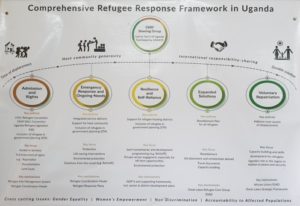
Figure 3 – Refuge Response Framework in Uganda
Project 1 – 3 days of Training by FSA XVI
In the context of The Field Study Abroad XVI scheduled for December 2019 – January 2020 it will be possible to organize 3 days of training to make continuous and consolidate the engagement of the Field Study Abroad in this reality and in general to the emergency management context.
The activities will cover two main areas:
- Microgrid Management and Optimization
- O&M of Solar Pumping plants and India hand pumps
The participants of the FSA XVI will be in charge to prepare in advance all the didactical materials needed for these purposes keeping in mind which are the 4 main goals of this activity:
- Access to water and solutions for irrigation;
- Sustainable Food production and cooking (e.g. cookstoves against deforestation)
- Light and solutions for illumination (e.g. solar lighting)
- Additional Services for the community; (e.g. welding, milling)
Project 2 – Extended Training for 19 Refugee Camps
The idea is a direct development of Project 1 by including 19 representatives of all the Refugee Camps in the Adjumani District in 3 weeks of work managed by a small group of students.
These activities will be focused not only on the targets of Project 1 but also in the training of local maintainers of solar pumping plants and expert in Microgrid. The additional goal is therefore the introduction of this new fundamental professional role creating in such a way a network of knowledges and people improving continuity and effectiveness of the water supply in all the communities laying the foundations for a possible future realization of a Microgrid covering the area.
Possible partners which could give logistic, financial and technical supports for this project are:
- Cooperation and Development, an important Italian NGO based in Kampala;
- Saint Egidio Community, the historical Italian NGO that started the School of Peace in Nyumanze;
- FOSID – Former Seminarians Initiatives for Development, one of the local Community Based Organizations of Adjumani;
- AICS office in Kampala– Italian Agency for Cooperation and Development.
Project 3 – Support for Reforestation
Deforestation and Desertification are two of the main problems of the area. These phenomena are partially caused by environmental imbalances creates by the charcoal production for cooking purposes which brings a profit of about 500 Ugandan schillings per day to the employments in this sector.
It is therefore paramount the development of a support project for reforestation aimed to:
- Make charcoal production economically unprofitable studying alternative and sustainable biomass sources (e.g. Papyrus Briquettes);
- The study of the introduction in the ecosystem and the effects in biodiversity of new plants and trees which are able to grow up in arid lands (e.g. acacia senegalensis);
- The purchase of seeds and the creation of a nursery to give a support to reforestation;


